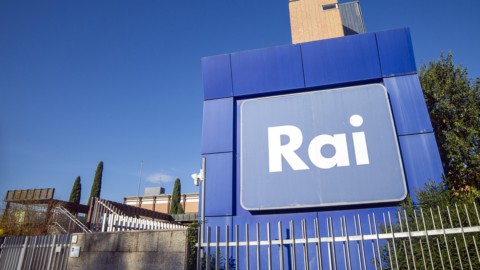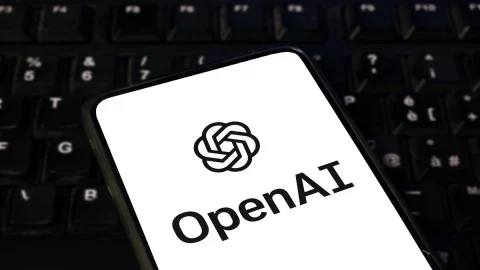The presentation of the schedules Rai this morning in Viale Mazzini he will have to deal first of all with what has happened and with what can still happen in the post Coronavirus era (with the hope that it will soon be defined as concluded). But that's not all, because the whole world of TV and media is going through epochal changes.
The dramatic "pause" of the lockdown has confronted everyone with new, previously unimaginable realities: smart/home working, remote teaching, canceled shows and suspended sport. During the three peak months of the crisis, the entire perimeter of the telecommunications system underwent strong changes, as stated in the document AgCom attached to the recent 2020 activity report. First of all, the value of the market which “at the end of 2020 could fall below 50 billion a loss compared to 2019 of 3 to 5 billion, corresponding to a variation between -6% and -10 per cent”. Furthermore, the document reads "Overall, the value of the economic system of communications in the first three months of 2020, estimated at 11,6 billion euros in revenues, is almost 6% lower than in the same period of 2019... For what concerns the telecommunications, in the first quarter, the fixed network segment suffered a more intense decline in revenues (-7%) than that of the mobile network (-2%), with an overall reduction of approximately 400 million euro compared to the same period of the previous year. This in the face of a marked increase in traffic volumes (voice and data).
In the media sector, which is estimated to have lost over €200 million in the quarter overall compared to the same period in 2019, the reduction affected all sectors, with the exception of paid online audiovisual content (VOD), which in March, the first month of lockdown, recorded a considerable growth rate (+42% compared to February, +60% compared to March 2019), exceeding 17 million unique users (estimates on Comscore data )… In general, the decrease in consumption by households and the blockage of production activities have had negative effects for the sale of advertising space (-9% in total on the first quarter of 2019) on various means of communication, including the internet". The Coronavirus, in fact, has paved the way for the development of paid on-demand services who were able to make good use of the dramatic circumstance with a bouquet of very competitive products compared to those who were forced to send inventories on the air.
During the past few months ithe consumption of television for each type of platform (digital, satellite or Web) together with the time spent in front of a device equipped with a screen (smart TV, PC, tablet, video game console or mobile phone) soared into double digits while, at the same time, consumption and, consequently, advertising revenues have drastically decreased. As noted by Nielsen and summarized by PrimaOnline in recent days, in the period January-May 2020 compared to the same period of the previous year the drop was 28% and, in particular -24% for the TV sector alone.
On the technological front, it must be remembered that the beginning of the Coronavirus crisis almost coincided with the launch of the roadmap aimed at the transition towards DVB-T2 where a substantial replacement of the television set capable of receiving signals in the new frequencies was expected. According to the report TV Sets Market Tracker of Omdia, one is expected in Europe drop in sales of new TV equipment by around 40%. The growing consumption of television through a smart TV together with theincrease in streaming diffusion lets glimpse scenarios of strong competition between different platforms within which the products offered to the public could mark differences and interest. What Bill Gates said in 1996 still applies: “Content is the King”. One could update this concept with “Platform is the Queen”. In this respect it is of particular interest the competition between Tim and Sky on fiber where the customer is contested for speed and connection stability but also for products of great interest and wide popularity such as movies and sports.
This is the essential context within which they are presented the schedules of generalist broadcasters. Unlike in past years, this time it will be the only Rai to present itself to the press and advertisers with an appointment half "in presence" and the other half in streaming connection. Mediaset has already made known the news of the next season with direct communications to the press, reserving the possibility of organizing an event in September, if the Covid situation allows it, the same will do First and Sky has an appointment scheduled for July 21st.
Rai presents its schedules for the next season in a climate of institutional uncertainty (reform of the TLC system as announced in the Government programme) and social uncertainty and in conditions of structural uncertainty of its editorial offer, including in the technological context that we have mentioned. The Public Service Company pays a serious penalty that even up FirstOnline we have repeatedly written: it is forced to do a lot with scarce and uncertain resources. In these conditions, the production obligations imposed by the Service Contract pose a serious mortgage on its future and, inevitably, the new products suffer the inevitable consequences.
The Rai 2020-21 schedules are characterized by three determining elements: the first concerns the 2018-21 Business Plan (in any case it is a document dated 2018 and drafted in the previous semester) and its related document concerning the Editorial Plan. This is the Public Service development project which should have been completed this year, in view of its expiry scheduled for next year and which, however, due to Covid, has been frozen until next December 31st. This new schedule should have been a direct expression of those guidelines, those industrial orientations that defined Rai as the "Media Company" of the years to come, while the reality seems quite different.
The second element of a more "political" nature refers to the recent controversies on the role and weight of artistic agents and external production companies which saw the "heavy" intervention of the Rai Parliamentary Supervisory Commission which requested, and in part obtained, the containment of their interference, in fact, in the schedules of the Public Service. To remember the recent controversies on the "weight" of companies of the caliber of Banijay (over 30% controlled by the French of Vivendi) out of total Rai production where it collects most of the hours under contract.
The Business Plan also contains five annexes (information plan, editorial plan, English channel, institutional channel and protection of linguistic minorities) and, at the moment, only the English and institutional channels were given the go-ahead by the Board of Directors with the appointment of their respective directors. Since this is the only relevant novelty this year, it was legitimate to wait for a specific "promotional" communication of these two channels, instead the lights are on only for light entertainment broadcasts. However, everything was at a standstill with regard to another pillar of Rai's industrial policy: the information offer which, according to the provisions of the Service Contract, envisaged a "remodulation of the number of newspapers".




